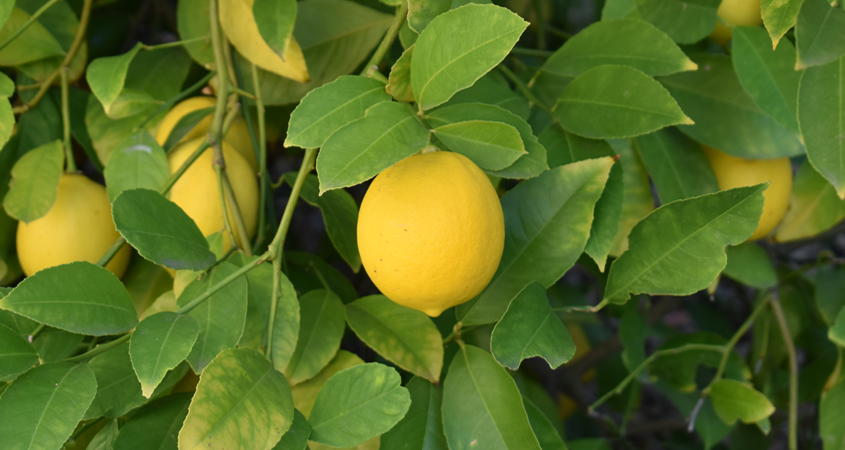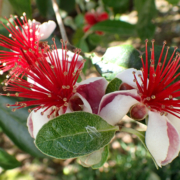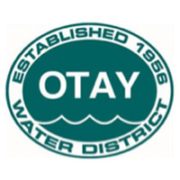You don’t have to be a farmer to enjoy edible plants in your sustainable landscaping. Many native plants and herbs have fruit and leaves you can harvest. They can be mixed into any climate-appropriate planting design.
Organic growing methods including sheet mulching (as explained in an earlier post) and integrated pest management ensure the health of the soil, crops, and people who enjoy them.
It’s smart to position edible plants together in your landscaping to take advantage of their irrigation needs in a limited area. If the rest of the landscaping is using minimal water, you can spare a little more for your fruits and veggies in their specific zone. Be sure to irrigate with the most efficient system possible.
Five fruit trees to enjoy

Improved Meyer Lemon trees (Citrus ‘Improved Meyer’) are popular sustainable landscaping features in San Diego County gardens. Photo: Wikimedia/Creative Commons
Fruit trees, especially citrus, thrive in San Diego County’s climates with just a little bit of care. Some top choices include:
Pomegranate (Punica granatum)
Chinese Date (Ziziphus jujuba)
Santa Rosa Plum (Prunus salicina)
Pineapple Guava (Acca sellowiana)
Improved Meyer Lemon (Citrus ‘Improved Meyer’)
This article was inspired by the 71-page Sustainable Landscapes Program guidebook available at SustainableLandscapesSD.org. The Water Authority and its partners also offer other great resources for landscaping upgrades, including free WaterSmart classes at WaterSmartSD.org.






